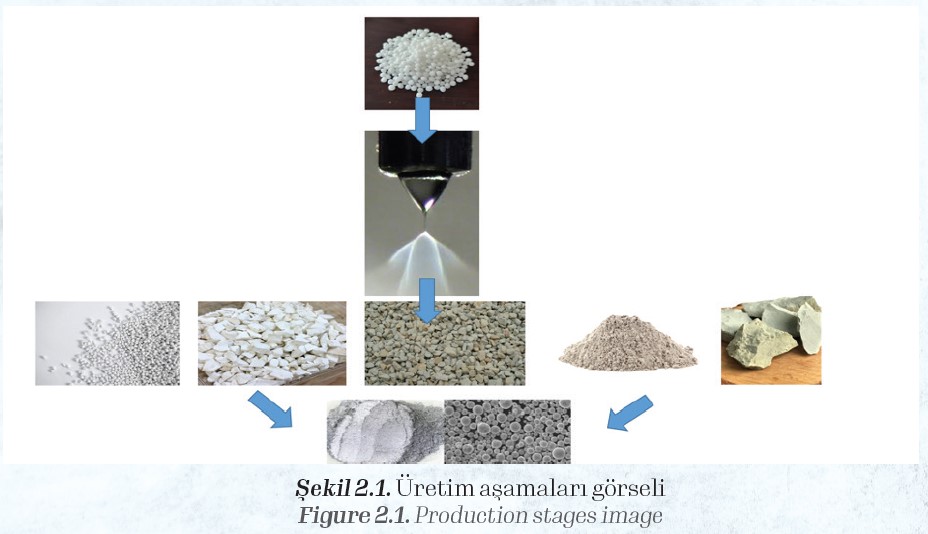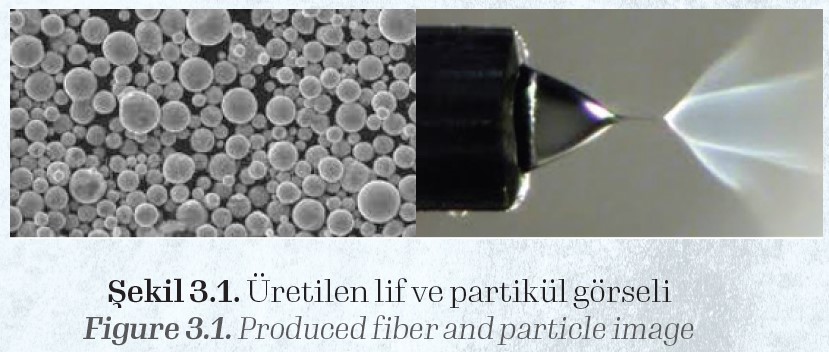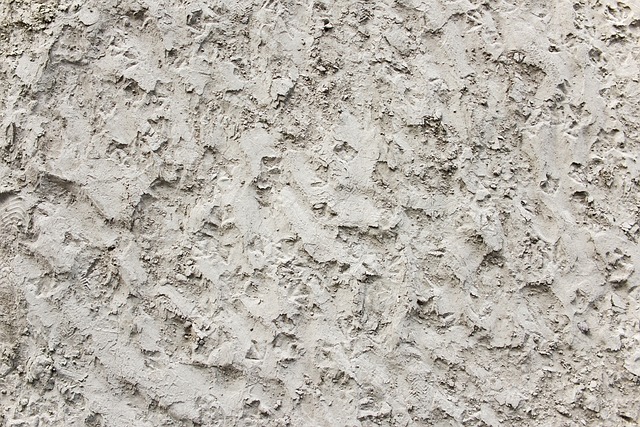Self-filtering Construction Paint from Natural Resources Active Substance Production
Filter and filter systems are systems that allow taking precautions against external factors by acting as a filter. While these systems are a machine system, they are sometimes used in industry as a material.
It is used for various purposes in construction chemicals, especially in industrial applications, by adding it to paints as a filtering powder material. In this study, zeolite, calcite, hydroxyapatite, clay, graphene, meerschaum and bentonite were mixed
homogeneously, mixed with pre-melted polyoxymethylene (POM) and frozen, thus sintering was providedand it was turned into powder with the help of a crusher and became suitable for adding to paints.
When the active substance obtained is added to the building paint, it will be able to trap cigarette smoke and toxic gases in the environment, thus cleaning the environment and protecting human health.
1.Introduction
Filter systems provide separation and cleaning functions by passing external factors through various mechanical, physical or biological processes. These systems have become a frequently preferred technique in the industry. It is especially preferred for filtering all harmful components that threaten human health.
However, their potential to be preferred has decreased since both the filter systems
are insufficient and they can reach high costs. All over the world, studies on obtaining filters from natural decomposers, especially from products that may be waste in the environment, have gained momentum.
Our research team also works on natural filters. In particular, the virus-retaining mask
filters experienced during the pandemic were provided with the product obtained from activated carbon-added polylactic acid (PLA) polymer by electrospinning method.
It has been observed that while preventing the transmission of viruses and bacteria with the N99 mask feature, it also filters other foreign elements. From this point of view, we
have directed our efforts to bring this feature to building paints.
The purpose of building paints is to provide an aesthetic appearance in exterior and interior systems, resistance to moisture and humidity, insulation, waterproofing, etc. used to add features. However, today, although many new studies are gaining momentum in this field, it is desired to add properties to paints with alternative solutions containing natural materials.
Thus, high performance will be achieved in building paints. Zeolite material has a porous structure that can filter harmful objects in the external environment. Clay is a natural material that can absorb heat. Calcite is actually a natural absorber that can be extracted from eggshells, seashells, marble dust and nature, especially in the province of Niğde.
Hydroxyapatite is a calcium and phosphate-based bone material. It is also a natural absorber with a porous structure like zeolite. Cigarette smoke has a system that can trap toxic factors. It can be obtained from eggshells, seashells and structures that are natural sources of calcium.
Graphene is a single-atom-thick layer of carbon atoms arranged in a hexagonal lattice, as well as providing good thermal insulation and a high filtering property. Meerschaum is a natural substance that can filter cigarette smoke, especially extracted in Eskişehir.
It can filter the poison in the cigarette. Bentonite is a substance used in the construction industry as a binder. While it is used as heat insulation, it is also used for absorbent purposes.
POM polymer, also known in the industry as polyacetal, is an engineering thermoplastic used in precision parts that require high stiffness, low friction and excellent dimensional stability. It contributes to keeping the polymer powders, which are intended for industrial use as an adhesive, together.
This is particularly important for our study. Since it will be added to the paint as an active ingredient, it is important to provide adhesion. When they are added to the paint by keeping the powders together, they will not settle to the bottom, and they will not be lumped, and by providing an equal distribution everywhere, superior performance will be gained to the paint.
The formation of cigarette smoke remains in the environment as a result of smoking, especially as a result of permanent odor in time. Whatever object is in the environment, it pervades it. As yet another harmful factor, toxic gases can be given as an example
to these gases, the wood industry. These gases can be flammable as well as poisonous. In these establishments, filter systems may be insufficient.
In this study, polymer-based active substance containing natural substances was obtained and by adding it to paints, it will be able to clean external factors such as cigarette smoke and toxic gas.
2. Materials and Method Used Materials
Zeolite, calcite, hydroxyapatite, clay, graphene, meerschaum, bentonite and polyoxymethylene (POM) were used.
Method
Each of the powders was weighed 10-25 grams separately. The eccentric is put into the mixer. By adding 1% paraffin wax lubricant into it, mixing was ensured at 200 rpm for 1 night. Post-processing mix powder was filled into a system.
At the bottom, the POM polymer was melted by heating. Tween 80 was passed through surfactant and sprayed onto a floor while airflow was applied to the powders on the upper
side. After the spraying function, the powders were allowed to dry at room conditions and the powders were collected again, passed through the POM melt and covered, and then taken to the sintering furnace, a homogeneous coated core-shell interacting natural substance, POM coated paint active material inside and outside was obtained. Production
stages are shown in Figure 2.1.

3. Result and Discussion
Figure 3.1. Particle production image is also included. Particles in the range of 35-200 nanometers were obtained with the device. Particles in spherical form have been successfully produced.

4. Conclusion
The active substance was successfully realized and made ready to be added to the dyes. It can hold cigarette smoke and toxic gases, as well as show heat insulation properties. When industrial use is targeted, an active ingredient with ideal properties providing added value has been obtained.
References
Buluş, E., Buluş, G. S., & Yakuphanoglu, F. (2020). Production of polylactic acid-activated charcoal nanofiber membranes for COVID-19 pandemic
by electrospinning technique and determination of filtration efficiency. Journal of Materials and Electronic Devices, 4(1), 21-26.
Gao, L., Cao, Y., Zhou, S. L., Zhuang, T. T., Wang, Y., & Zhu, J. H. (2009). Eliminating carcinogenic pollutants in environment: Reducing the
tobacco specific nitrosamines level of smoke by zeolite-like calcosilicate. Journal of Hazardous Materials, 169(1-3), 1034-1039.
Erdi Buluş
Lecturer / Material Technologies Specialist
Istanbul Arel University
ArelPOTKAM (Polymer Technologies and Composite Application and Research Center)
Transportation Services Department Civil Aviation Cabin Services Program, Vocational School
Gülseren Sakarya Buluş
Specialist
Istanbul Provincial Health Directorate
Bahçeşehir University
Engineering Management Department
Graduate School of Education


